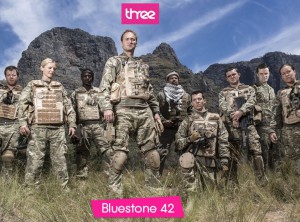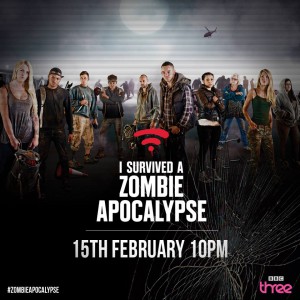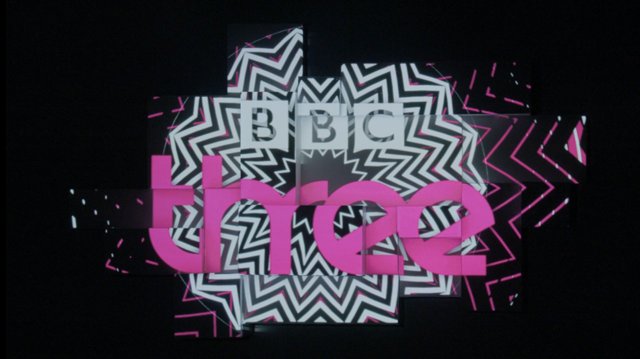Public-Service Streaming: BBC Three and the Politics of Online Engagement
Post by Elizabeth Evans, University of Nottingham
This post continues the ongoing “From Nottingham and Beyond” series, with contributions from faculty and alumni of the University of Nottingham’s Department of Culture, Film and Media. This week’s contributor is Elizabeth Evans, Assistant Professor of Film and Television Studies in our department.
In March 2014, the BBC announced plans to “transform” one of its channels, BBC Three, into an online-only “channel.” Under the proposals, BBC Three would cease linear broadcasting and exist only via the Corporation’s website and the hugely popular online catch-up service, iPlayer. This would then allow the channel’s broadcast spectrum space to be transferred to a new BBC One+1 channel and to increase the broadcast hours of children’s-only channel CBBC from twelve hours to fourteen. The announcement comes at an uncertain time for the BBC. After several years of budget freezes, its Royal Charter, which gives the BBC the right to collect the legally enforced license fee, is due for review in 2016. Its future has been positioned front and center in public debates. Party leaders called for the Corporation’s reform during the recent UK general election. Prime Minister David Cameron then appointed a new Minister for Culture, Media and Sport who had likened the license fee to the hugely unpopular and riot-inducing Thatcherite poll tax. Central to these debates are questions around the future of television viewing in light of digital technologies, and the continued value of public-service broadcasting.
It’s unsurprising that BBC Three has been the catalyst for these debates. BBC Three is clearly and incessantly labeled as a “youth-oriented” channel with an intended audience aged 16-34. That same group is equally consistently associated with changing viewing habits and a shift away from traditional distribution avenues such as broadcasting. This association was central to how the BBC announced its plan. Director of TV Danny Cohen told the press in December 2014 that it was the BBC’s responsibility to adapt to perceived changes in how 16-24 year-olds watch television. This necessary change is, apparently, a move away from broadcasting, producing a mix of episodic and short-form content, and positioning streaming technology at the heart of the BBC’s activities.
 Although justified via beliefs concerning changing audience behavior, the BBC Three announcement also involved a series of claims about the value of broadcasting or, more specifically, values that broadcasting lacks. Cohen pronounced that the new, online BBC Three would “have the freedom to break traditional shackles and allow the BBC to be a leader in digital change.” BBC Three Controller Damien Cavanagh equated this “breaking [of] traditional shackles” to short-form video and to more transmedia or interactive storytelling forms designed to promote debate and to generate a “richer experience” for audiences. This sense of experimentation and innovation was explicitly positioned as a value that BBC Three’s new form would offer its youth audience, and which broadcasting apparently lacks.
Although justified via beliefs concerning changing audience behavior, the BBC Three announcement also involved a series of claims about the value of broadcasting or, more specifically, values that broadcasting lacks. Cohen pronounced that the new, online BBC Three would “have the freedom to break traditional shackles and allow the BBC to be a leader in digital change.” BBC Three Controller Damien Cavanagh equated this “breaking [of] traditional shackles” to short-form video and to more transmedia or interactive storytelling forms designed to promote debate and to generate a “richer experience” for audiences. This sense of experimentation and innovation was explicitly positioned as a value that BBC Three’s new form would offer its youth audience, and which broadcasting apparently lacks.
Broadcasting was instead constructed as beholden to regimented episode lengths and slow production schedules. Both claims are somewhat ironic and problematic. BBC Three already produces short content in the form of 60 Second News, and on multiple occasions during its history, the BBC has created broadcast content that isn’t an hour or half-hour in length. Short-form content is a regular feature of rival public-service broadcaster Channel 4’s weekday evening schedule, with a five-minute slot for its series 4Thought. The BBC has equally ignored the hour and half-hour as program start times, most notably in Saturday early-evening slots. In terms of responsiveness to emerging events, the valuing of online over broadcasting also ignores the central technological feature of broadcasting: that it can be live, with news and current-affairs programming regularly responding rapidly to real-world events via broadcast means. Nothing inherent in broadcasting technology requires regimented slots or a delay in production. Ultimately the BBC positions the creative value of online engagement in terms of freedom from the (perceived) traditional practices of the broadcast industry, practices that have seemingly restricted the potential of broadcast technology itself.
Thus, the transformation of BBC Three has been couched in debates that devalue broadcasting in favor of a streaming-based distribution system seen as more agile, creative and relevant for younger audiences. To this end, the proposed changes to BBC Three are positioned as not simply about changing a single television channel, but about reinventing what the BBC, and what public service, means, future-proofing it for 2016 Charter renewal and beyond.
 At the same time, however, the proposals contain unspoken value statements that actually privilege broadcasting. After the full plans met with criticism, Kavanagh worked to reassure critics that new BBC Three content would still appear on BBC One or BBC Two in late-evening slots, creating a hierarchy of content at the fringes of the BBC’s broadcast activities. More prominently, at the heart of the BBC’s announcement is the provision of a BBC One+1 channel, which would repeat that channel’s content one hour later, along with expanded broadcast provision for children aged 6-12 via CBBC. By balancing an online BBC Three with broadcast expansion elsewhere, the Corporation makes a number of further assumptions about the value of television technology for its audiences, highlighting contradictions in its overall strategy. The general audience is positioned as still predominantly valuing broadcasting, but that “general audience” apparently does not include younger audiences or those who enjoy content aimed at younger audiences (that is, people not aged 16-34 but still interested in content pitched to that demographic). It also assumes that BBC Three’s audiences will not suffer from the same problems with accessing broadband services that BBC One’s audience would. Younger audiences, according to the BBC, would not only prefer to access content via streaming but are also universally able to do so, and thus are unaffected by the myriad of socio-cultural factors that play into the digital divide or infrastructural discrepancies in broadband access.
At the same time, however, the proposals contain unspoken value statements that actually privilege broadcasting. After the full plans met with criticism, Kavanagh worked to reassure critics that new BBC Three content would still appear on BBC One or BBC Two in late-evening slots, creating a hierarchy of content at the fringes of the BBC’s broadcast activities. More prominently, at the heart of the BBC’s announcement is the provision of a BBC One+1 channel, which would repeat that channel’s content one hour later, along with expanded broadcast provision for children aged 6-12 via CBBC. By balancing an online BBC Three with broadcast expansion elsewhere, the Corporation makes a number of further assumptions about the value of television technology for its audiences, highlighting contradictions in its overall strategy. The general audience is positioned as still predominantly valuing broadcasting, but that “general audience” apparently does not include younger audiences or those who enjoy content aimed at younger audiences (that is, people not aged 16-34 but still interested in content pitched to that demographic). It also assumes that BBC Three’s audiences will not suffer from the same problems with accessing broadband services that BBC One’s audience would. Younger audiences, according to the BBC, would not only prefer to access content via streaming but are also universally able to do so, and thus are unaffected by the myriad of socio-cultural factors that play into the digital divide or infrastructural discrepancies in broadband access.
Whether the transformation of BBC Three actually goes ahead is still to be seen (governing body the BBC Trust has yet to approve the idea, and it has already been delayed until 2016). However, the way the BBC has proposed the strategy highlights the contradictory values currently at play in the UK television landscape. The notion that public-service broadcasting must change is positioned as self-evident. Online spaces are seen as agile and creative in ways that broadcasting is not, as protected against any further changes that may be wrought by digital convergence. Younger audiences are seemingly denied this value of broadcasting and firmly associated with the changes that are positioned at the heart of the new public-service media. But at the same time, additional value is placed on broadcasting for general – read older – audiences. As the BBC presents streaming and digital technologies as the future, it simultaneously reinforces broadcasting and the TV set. This works to position the Corporation as embracing the new while still valuing the old, and reiterates the centrality of the relationship among content, audience and distribution to public service broadcasting’s future definitions.



